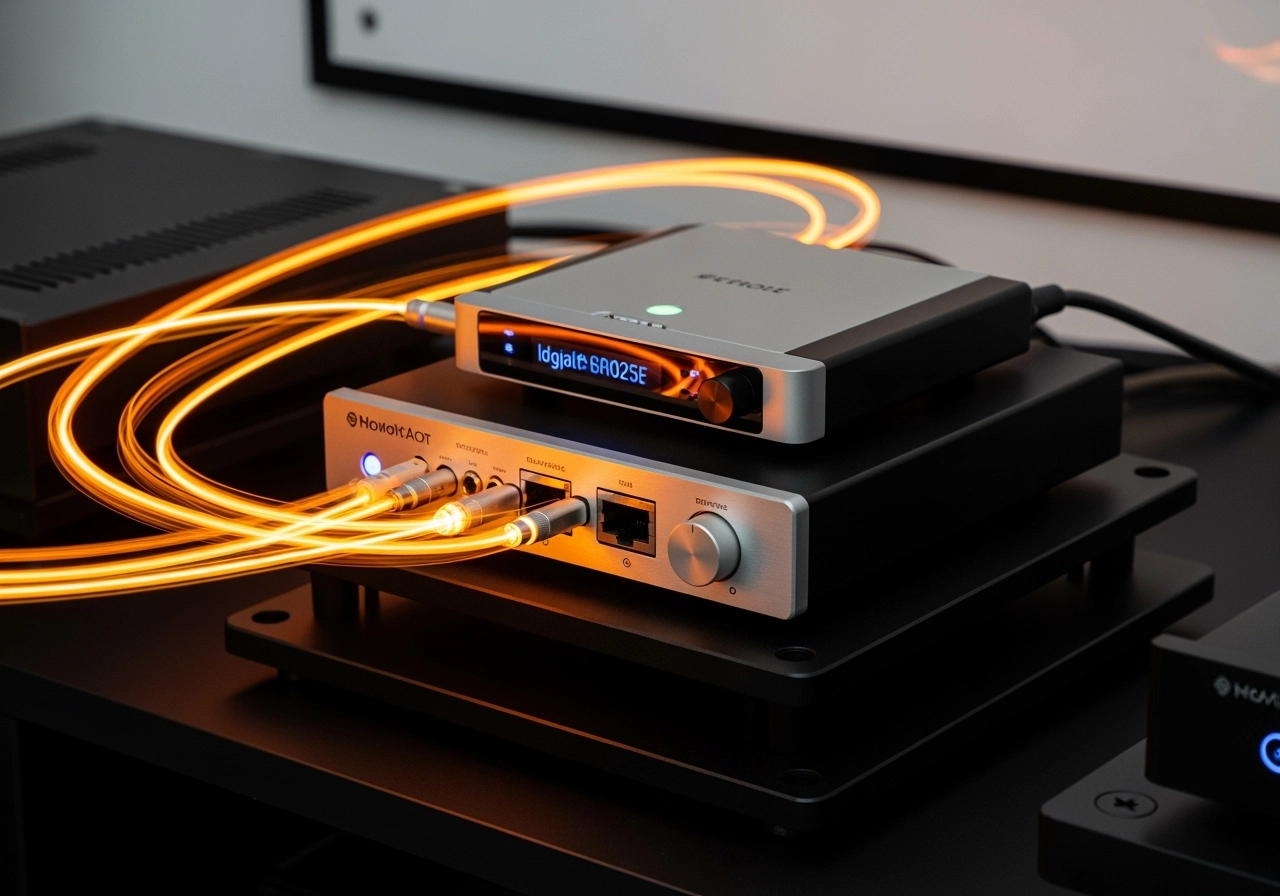Isolate Your Digital Gear for Better Sound
While audio isolation is most commonly associated with turntables, it offers significant and often overlooked benefits for digital audio and streaming gear. Components like Digital-to-Analog Converters (DACs), CD players, and network streamers are highly susceptible to micro-vibrations that can degrade sound quality. Properly isolating these devices can reduce digital “jitter” and electronic noise, resulting in a cleaner, more detailed, and more dynamic sound.
The Problem with Digital Vibrations
Unlike analog turntables where vibrations directly cause the stylus to skip or introduce acoustic feedback, vibrations in digital components cause a different, more subtle kind of harm. A vibration is simply kinetic energy. When this energy reaches sensitive electronics, it can cause the circuitry to flex or resonate. This physical disturbance can affect the precise timing of the digital clock signals, a phenomenon known as jitter. Jitter is a form of timing error in the digital data stream, and even in minute amounts, it can introduce distortion and a loss of clarity, making the sound feel less “stable” and “focused.”
How Isolation Improves Digital Audio
By using an isolation mat, platform, or feet, you can effectively decouple your digital gear from external vibrations. This prevents the jitter from being introduced in the first place, allowing the DAC or streamer to do its job with greater precision.
- Reduces Jitter: A stable, vibration-free environment allows the component’s internal clock to operate with maximum accuracy. This reduces timing errors and produces a more faithful reconstruction of the original audio signal. The result is a more coherent and musical presentation.
- Lowers the Noise Floor: External vibrations can also be converted into low-level electrical noise within the sensitive circuitry. By isolating the component, you reduce this self-generated noise, which lowers the overall noise floor. This allows you to hear more of the subtle details and micro-dynamics within the music, revealing a richer and more three-dimensional soundstage.
- Improves DAC and Streamer Performance: Many audiophiles spend a great deal on high-end DACs and streamers. However, these components can only perform at their best when they are operating in a quiet environment. Isolation allows these devices to function as they were designed, maximizing the return on your investment.
Choosing an Isolation Solution
When selecting an isolation solution for your digital gear, look for materials that are highly effective at dissipating vibrational energy across a wide range of frequencies.
- Engineered Mats: High-quality mats made from advanced materials like microcell rigidized foam are ideal for this application. They are specifically designed to absorb and dissipate vibrations without adding significant mass.
- Isolation Feet: Placing isolation feet or pucks directly under your DAC or streamer is a simple and highly effective way to create a barrier between the component and the surface it rests on.
- Isolation Platforms: For an all-in-one solution, a dedicated isolation platform that uses a combination of mass and damping materials can provide a rock-solid foundation for all your digital components.
The best approach is to experiment with different solutions to find what works best for your specific setup. The audible benefits can be surprising, even for a system you thought was already at its peak performance.
Q&A Section
Q: Do I need to isolate my power supply as well? A: Yes. Many digital components use an external power supply or a “wall wart” that can also be a source of vibration and noise. Isolating both the main component and its power supply can provide a cumulative improvement in sound quality.
Q: Why is isolation more important for high-end digital gear? A: High-end digital gear is built with more precise and sensitive components to extract every last detail from the data. However, this increased sensitivity also makes them more vulnerable to the negative effects of vibration. Isolation helps these components reach their full potential.
Q: Does isolation affect the sound of a CD player? A: Yes, in a CD player, isolation helps to stabilize the laser and the disc-reading mechanism. This prevents micro-vibrations from causing tracking errors or timing inaccuracies, leading to a more accurate and stable data stream and, therefore, better sound.
